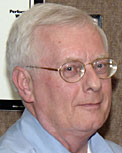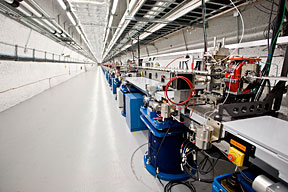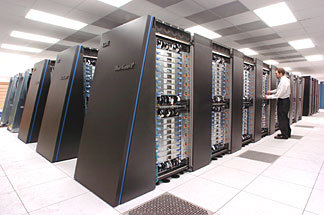| Research
|
Facilities used for disposal of low-level radioactive waste must be able to protect the public and the environment for thousands of years. Demonstrating how well DOE’s facilities can be expected to meet that standard is the purpose of Performance Assessments (PAs); developing the practices and requirements to assure that PAs provide credible, science-based documentation has long been the mission of Savannah River National Laboratory’s Elmer Wilhite. Wilhite calls on his broad background in environmental chemistry and radiochemistry to understand just what it takes to protect the public and the environment. Familiar with work at other national laboratories on the impacts from nuclear fallout on radiation exposure to humans through vegetation pathways, he expanded those ideas into a broader framework. As a result, his expertise has been sought out since the 1980s, when he participated in development of DOE’s order establishing the first performance requirements for low-level waste disposal. He later chaired the first peer review panel to provide technical review of low-level waste disposal facility PAs. Since that time, he has frequently been called upon to take a leadership role in the development or review of PAs across the DOE complex. Wilhite’s work has pointed the way to approval of appropriate levels of protection for each disposal facility. For example, he showed that the Savannah River Site’s “saltstone” waste must be isolated from the environment by concrete vaults, but the Site’s lower activity solid waste could safely be disposed in less expensive facilities. He also developed a concept for a separate radiological assessment, which would consider the composite effects of a low-level waste disposal facility as well as other residual radiological source terms that could add to the dose from the facility. His impact reaches beyond the U.S. borders: As part of his leadership of international efforts in the areas of low-level waste treatment and disposal, he chaired an international advisory working group meeting for the International Atomic Energy Agency to develop a methodology for comparison of health and environmental impacts of various energy production fuel cycles. Perhaps more importantly, Wilhite’s impact will continue to be felt in the future as well: In addition to his ongoing work, he serves as a mentor and resource to younger researchers and he trains and guides numerous personnel to manage radioactive waste facilities to ensure protection of the environment and population for years to come.Submitted by DOE's Savannah River National Laboratory |
|||||||||||||||||||||||||||
|
Check out the joint Fermilab/SLAC publication symmetry.
|
Blue Gene/P takes on a green hue
From Deep Blue, the computer that defeated Garry Kasparov in a 1997 chess match, to the new Blue Gene line of high-performance computers created by IBM, a single color has traditionally been associated with advanced computing. With the recent opening of the Argonne Leadership Computing Facility at DOE's Argonne National Laboratory, however, high-performance computing has taken on a different hue: green. Several innovative steps designed to maximize the efficiency of Argonne's new Blue Gene/P high-performance computer have saved many taxpayer dollars while reducing the laboratory's environmental footprint. While similar computing centers at other laboratories and institutions often require several megawatts of electricity— enough to meet the energy demands a small town—the ALCF needs only a little more than a megawatt of power. Because the ALCF can effectively meet the demands of this world-class computer, the laboratory ends up saving taxpayers more than a million dollars a year, said Paul Messina, director of science at the ALCF. The Blue Gene/P currently runs at a speed of more than 557 teraflops, which means that it can complete more than 557 trillion calculations per second. While several high-performance computing facilities recently established or upgraded at some of Argonne's sister laboratories have surpassed that mark, only one exceeds the efficiency of Argonne's Blue Gene/P. "The Blue Gene/P uses about a third as much electricity as a machine of comparable size built with more conventional parts," Messina said. While a megawatt of electricity might seem like a lot of power, the massive number of computations that the Blue Gene/P can do puts it in perspective. Energy efficiency of high-performance computers is measured in flops per watt—how many calculations per second the computer can do for every watt of electricity it uses. According to the November 2008 Green500 ranking of supercomputers, the Blue Gene/P's energy efficiency averages out to more than 350 million calculations a second per watt. By contrast, a common household lightbulb frequently uses between 50 and 100 watts of electricity. Among the top 20 supercomputers in the world, the Blue Gene/P is the second-most energy-efficient.Submitted by DOE's Argonne National Laboratory |




